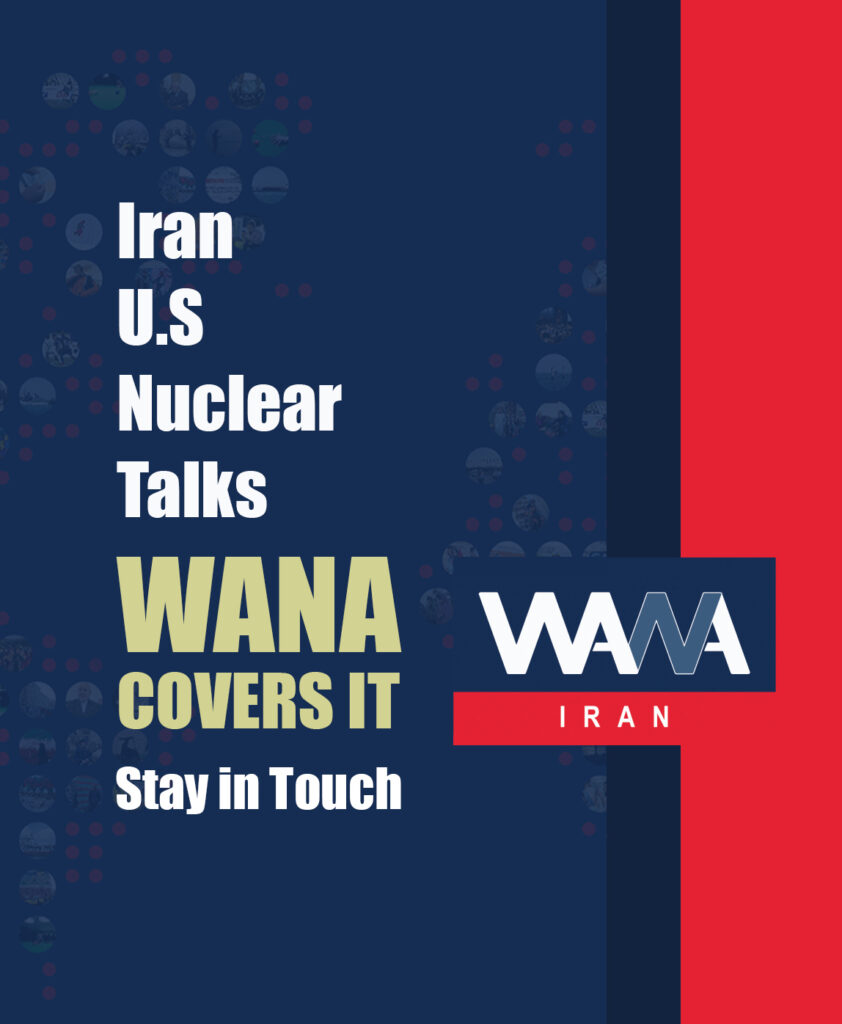Between Hawk and Dove: Iran’s Strategy in International Politics
WANA (May 24) – The behavior of the United States toward Iran can be interpreted from the perspective of aggressive realism as an effort to maintain global hegemony by containing regional powers. This theory explains why the U.S. continued its pressures even after the JCPOA agreement. However, an accurate assessment of the current situation shows that the U.S. is implementing a Hawk-Dove strategy, meaning it tries to force Iran into accepting unilateral conditions by displaying aggressive behavior.
The Hawk-Dove game is one of the well-known models in game theory that examines competitive behaviors and different strategies in conflicts. This game is usually used to analyze animal behaviors in competition over resources (such as food, territory, or mates), but it also has applications in social sciences and economics.
In recent years, the Hawk-Dove game has been widely applied in the field of political interactions within international relations because it is essentially a mathematical model that analyzes strategic interactions between two actors under conditions of conflicting interests.
Structure of the Game
In the Hawk-Dove game, there are two types of strategies:
- Hawk: Aggressive and warlike behavior to seize resources.
- Dove: Peaceful behavior and avoidance of conflict.
Three possible scenarios may occur:
- Hawk-Hawk: Both engage in conflict; both gain benefits but also incur costs.
- Hawk-Dove: The hawk wins without cost, the dove loses.
- Dove-Dove: They share the resources without conflict.
If the cost of conflict is greater than the benefit, the dove behavior is more advantageous; but if the cost is low, being a hawk will be more profitable.
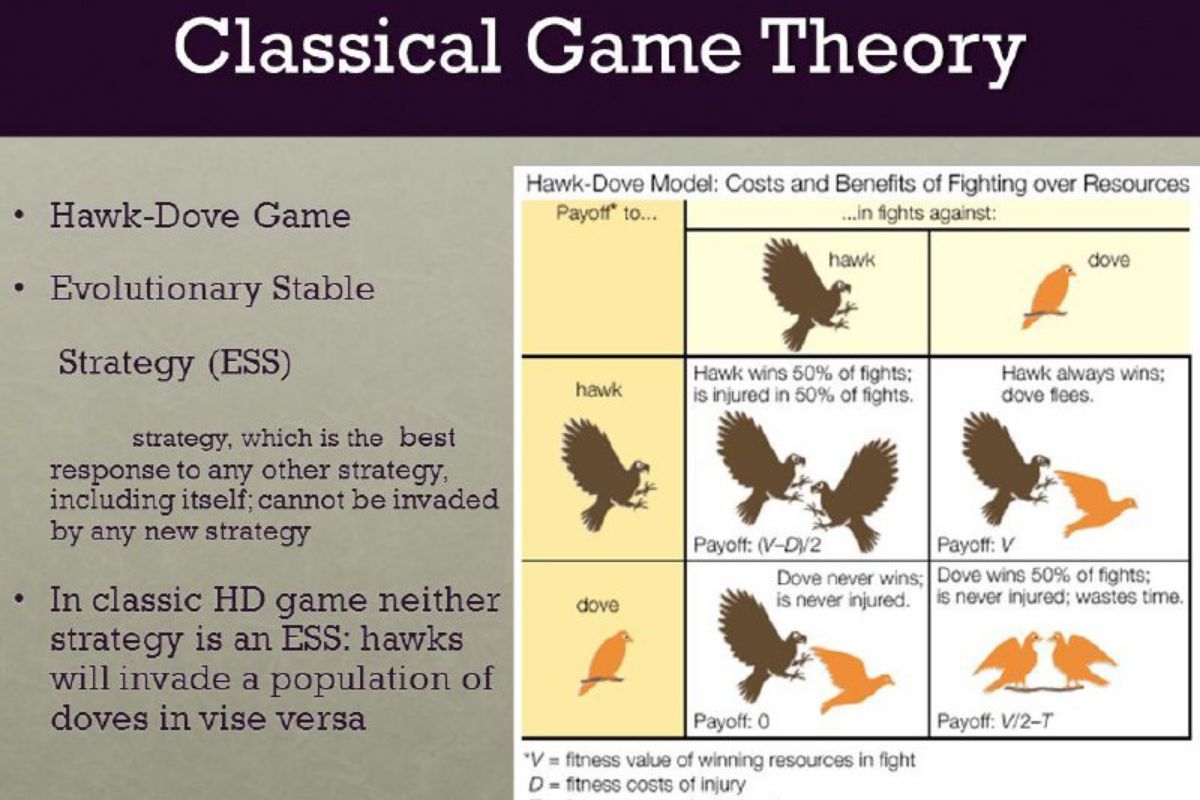
Example in the realm of politics
One clear example of the Hawk-Dove game is the competition over strategic resources (such as oil or gas). Suppose two countries (Country A and Country B) are contesting control over an energy resource (for example, a shared gas field at their border). Each can choose one of the two strategies. In such a situation, three scenarios can arise:
- Both hawks: Military conflict and heavy losses for both.
- One hawk, one dove: The aggressive country seizes the resource, the peaceful country loses its credibility or interests (like Iraq’s invasion of Kuwait).
- Both doves: Agreement to divide the resources; lower but stable profit.
If the cost of war is high (sanctions, economic collapse), negotiation is preferred. But if one side senses the other’s weakness, it may choose the hawk strategy to gain full profit. This game explains why, in international politics, peace and conflict can coexist simultaneously.
Analysis of Iran-U.S. Negotiations
The application of the Hawk-Dove game in Iran-U.S. relations, especially the negotiations between the two countries, can be explained as follows:
Hawk: Symbolizes aggressive and risk-taking policy (demonstration of military power, maximum sanctions)
Dove: Symbolizes cautious policy and risk avoidance (negotiation, diplomatic flexibility)
Based on this, the analysis of the U.S. behavioral pattern contains noteworthy points; because the dominant strategy of this country is a combination of hawk behavior at the operational level (sanctions, military pressure) with a dove appearance at the discourse level (expressing willingness to negotiate).
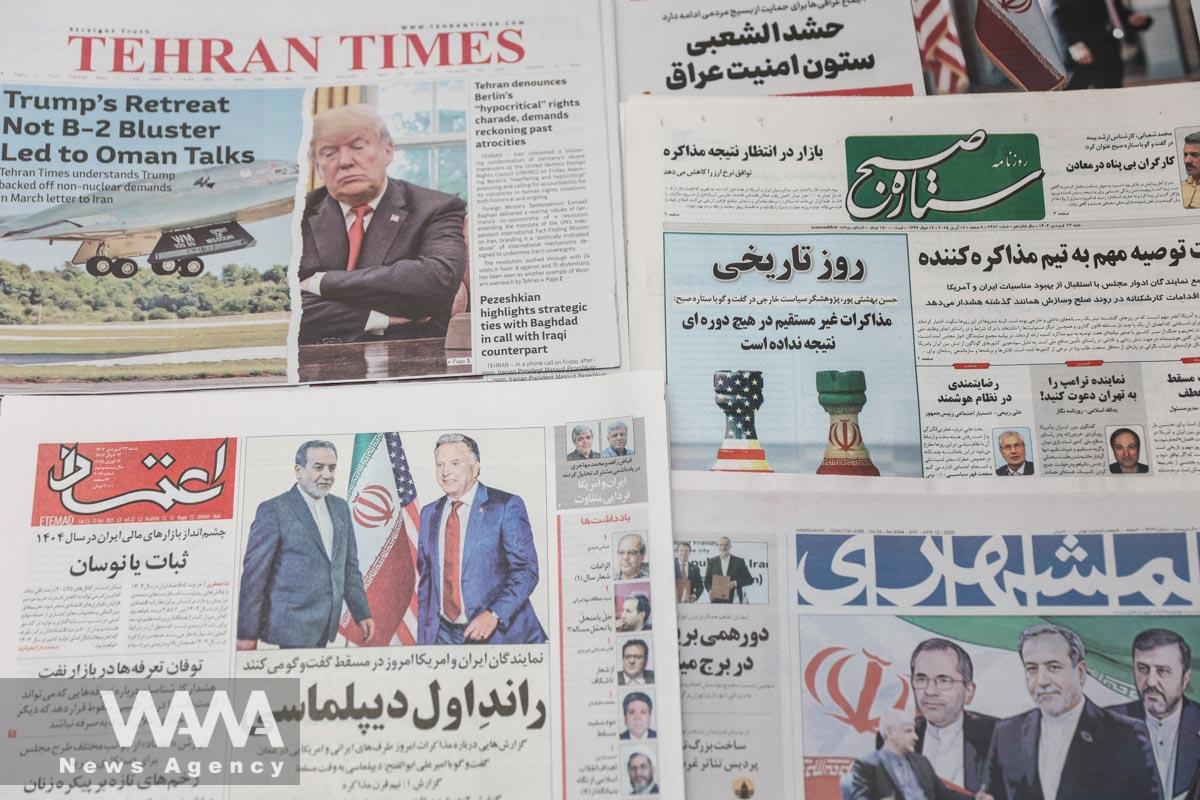
An Iranian newspaper with a cover photo of Iran’s Foreign Minister Abbas Araqchi and U.S. Middle East envoy Steve Witkoff, is seen in Tehran, Iran, April 12, 2025. Majid Asgaripour/WANA (West Asia News Agency)
What objectives does the U.S. pursue in this dual strategy?
The United States aims to compel Iran to accept the role of the dove or to surrender to its demands. It also seeks to increase the costs of resistance for the Iranian people or the refusal of Iran to choose the hawk role. In addition to these, creating a duality in decision-making among the governing institutions is also among the U.S. plans on the table, which it pursues vigorously.
Considering the above, the dangerous consequences of the Hawk-Dove trap for Iran are as follows:
Likely scenario in case of dove-like behavior:
Initially, deterrence capability gradually weakens, and one of its results is the loss of bargaining leverage in negotiations, which ultimately leads to increased boldness of the opposing side.
Likely scenario in case of hawk-like behavior:
In this scenario, the risk of military conflict is severely limited, while on the other hand, sanctions are intensified. The international pressure lever is also activated.
Smart Strategies to Escape the Trap
For Iran to intelligently escape the “Hawk-Dove” trap, it is necessary to simultaneously pursue two complementary strategies.
1. The Wise Hawk: Maintaining deterrence capabilities (missile and regional) alongside precise and targeted responses to threats, calculated use of pressure leverage, and symbolic actions such as missile tests or controlled advancement of nuclear activities to demonstrate seriousness and strategic calculation.
2. The Armed Dove: Displaying readiness for negotiation and maintaining a peaceful appearance, while secretly continuing to strengthen defensive and military power.
The combination of these two approaches reduces the risk of conflict, preserves bargaining power, and prevents either passivity or reckless adventurism; Iran will neither be passive nor provocative, but remain a smart and balanced actor.
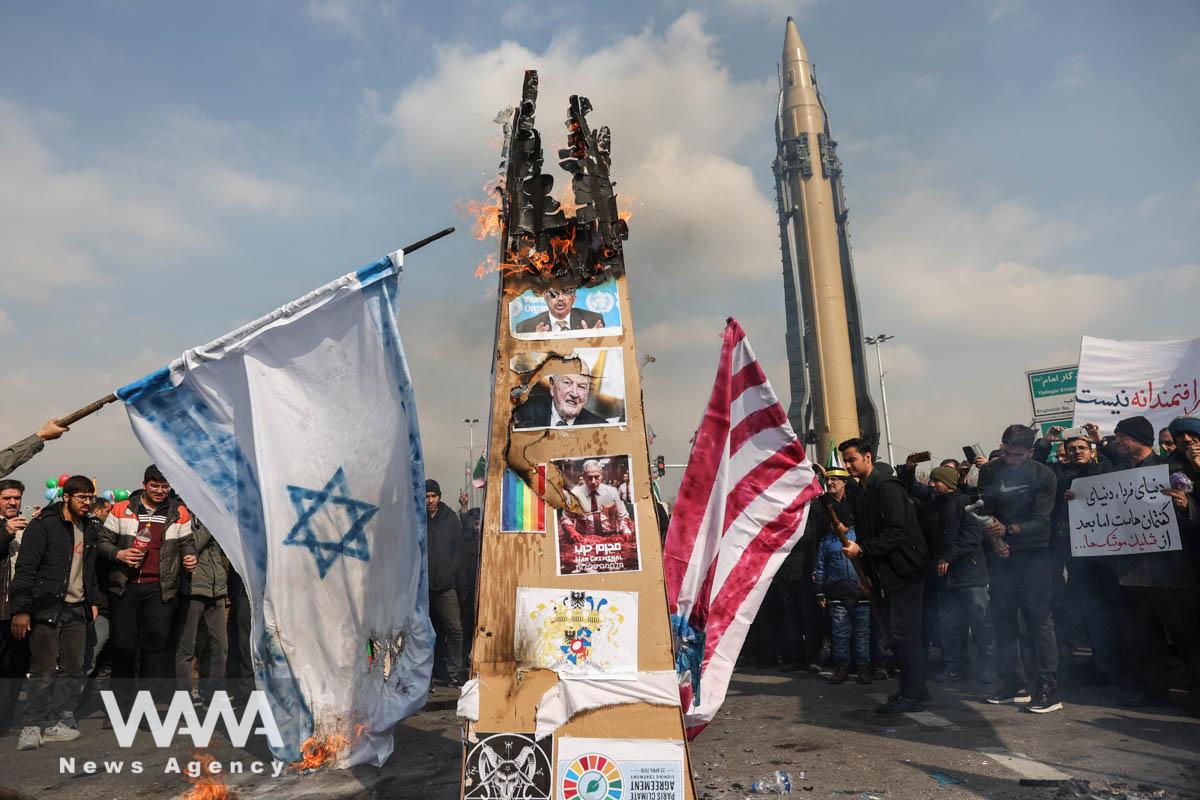
Iranians burn Israeli and U.S. flags during the 46th anniversary of the Islamic Revolution in Tehran, Iran, February 10, 2025. Majid Asgaripour/WANA (West Asia News Agency)
Innovative suggestions and strategic recommendations
Based on this approach, the model proposed for Iran is called the “Dynamic Deterrence Equilibrium.” This model comprises three combined strategies: deterrence, diplomacy, and economy.
In the deterrence domain, the focus is on the development of hypersonic missiles. These weapons, with their high speed and power, significantly increase the cost of a potential attack for the United States and cause the enemy to exercise caution in decision-making.
In the diplomatic sphere, the proposal is to form an anti-sanctions coalition with China and Russia. This cooperation could reduce the pressure of unilateral U.S. sanctions and strengthen Iran’s position on the international stage.
Economically, the establishment of a non-dollar exchange mechanism is considered. Through this measure, Iran can decrease its dependence on the dollar and use other currencies in international transactions. The outcome of this approach will be a reduction in the pressures arising from financial and banking sanctions and an increase in the country’s economic resilience.
In the media domain, the exposure of documents related to the U.S. violating its commitments is identified as a key action. This measure can not only change the dominant narrative at the international level but also raise global public awareness regarding U.S. policies. Through this, Iran can attract greater international support and reduce political and economic pressures against itself.
Together, these four components help Iran resist external pressures and strengthen its position in the international arena. Diplomatic and economic cooperation with China and Russia, alongside strengthening military and media capabilities, constitutes Iran’s comprehensive strategy to confront U.S. sanctions and pressures.

The Secret of Trump’s Two Tones About Iran!
WANA (May 17) – The issue of Iran has become a fixed part of Trump’s speeches during his trip to the region; but expressed in different forms and almost with two distinct tones. In Saudi Arabia, Trump’s tone was a mix of sarcasm, reproach, and humiliation. He referred in detail to internal crises and […]
Alongside implementing the aforementioned strategies, attention to the following critical warnings holds strategic importance:
First, avoiding any emotional reaction, lacking precise cost-benefit evaluation, which could escalate the cycle of tensions.
Second, refraining from establishing a one-sided behavioral pattern (whether pure aggression or complete passivity) that reduces diplomatic maneuverability.
Third, adhering to the principle of “refusal to separate strategic leverage tools before obtaining credible and monitorable international guarantees.”
Adopting this intelligent framework not only facilitates the way out of the hawk-dove deadlock but also, by strengthening Iran’s bargaining position on the international stage, enables the conversion of threats into strategic opportunities.
Achieving this requires comprehensive coordination among policymaking institutions, internal cohesion at the level of high-level decision-making, and the utilization of multidimensional national power capacities in both hardware and software domains.
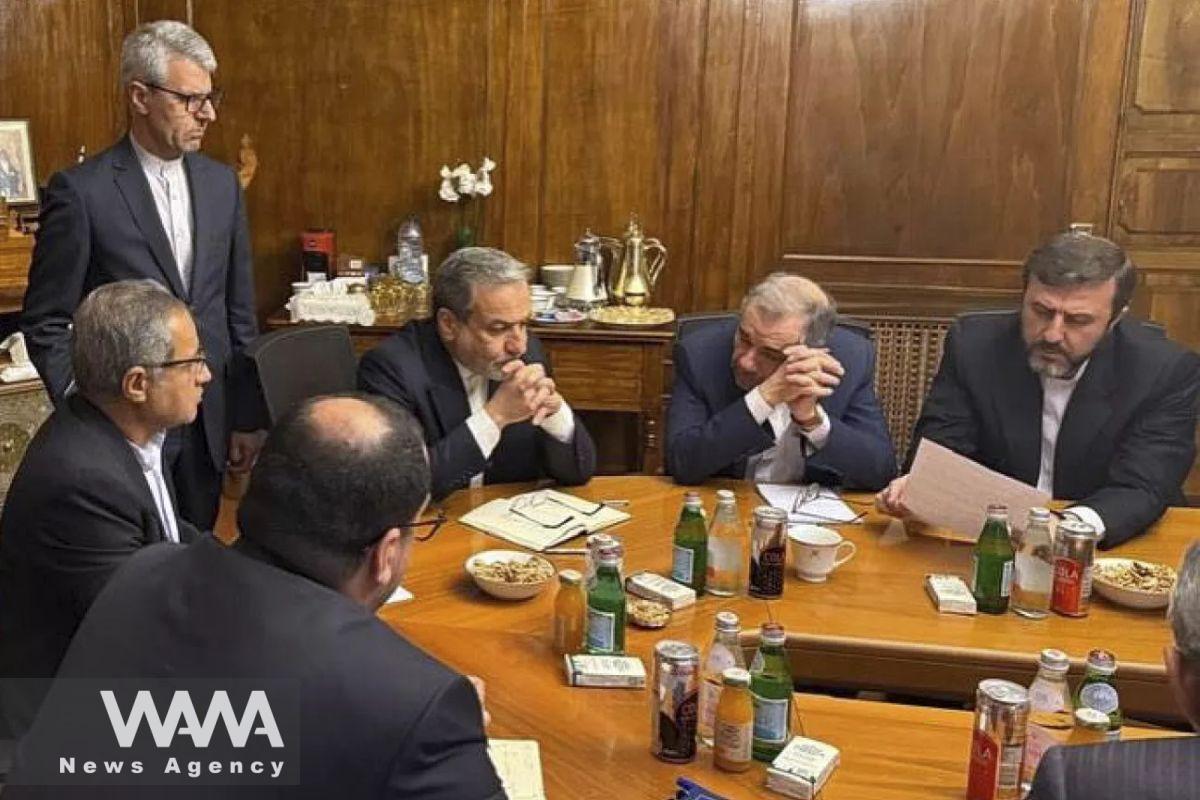
Iranian negotiating team in U.S. talks. Social media/ WANA News Agency


